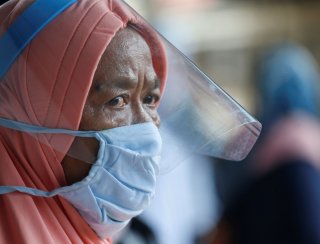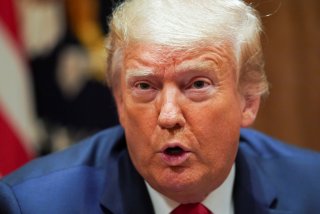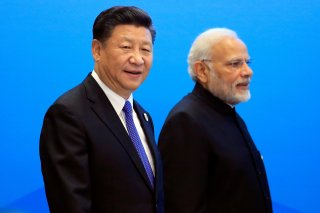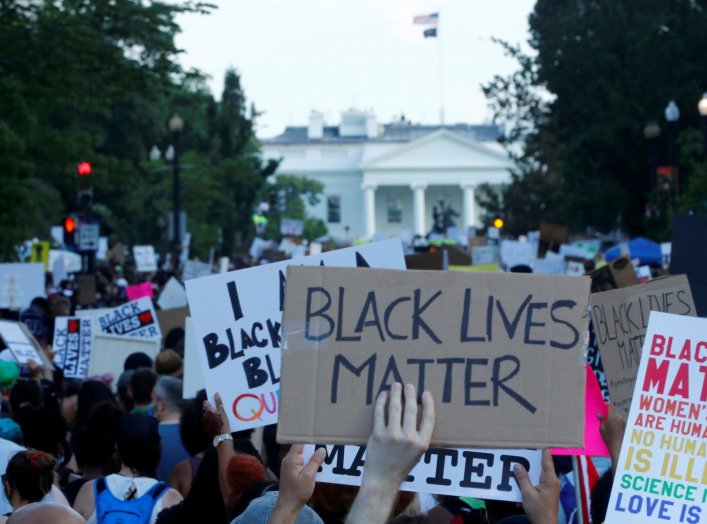After months of diplomatic efforts to dissuade other nations from buying their 5G infrastructure from Huawei, the administration delivered what one official called a “death blow.” On May 15, the Commerce Department banned all sales of advanced semiconductors from American suppliers to Huawei. It also prohibited all sales of equipment to design and produce advanced semiconductors by foreign companies that use U.S. technology or intellectual property.
In the five months between now and the election, could the U.S. attempt to enforce that ban become a twenty-first-century equivalent of the oil embargo the United States imposed on Japan in August 1941? While many people may not remember what happened, and while it was certainly not what the United States intended or anticipated, that action precipitated Japan’s attack on Pearl Harbor four months later—and America’s entry into World War II.
The thought that the United States and China could find themselves in a real, hot, bloody war will strike many readers as inconceivable. But we should remember that when we say something is inconceivable, this is not a claim about what is possible in the world, but rather about what our minds can conceive. In the summer of 1941, the possibility that a nation less than one-quarter the size of the United States would launch a bolt from the blue against the most powerful nation in the world was beyond Washington’s imagination.
To punish Japan for its military aggression against its neighbors in the late 1930s, the United States had initially imposed sanctions, and later an embargo on exports of high-grade scrap iron and aviation fuel to Japan. When these failed to stop its expansion, Washington ratcheted up the pressure by including essential raw materials such as iron, brass, and copper. Finally, on August 1, 1941, Franklin D. Roosevelt announced that the United States would embargo all oil shipments to Japan.
Eighty percent of Japan’s oil came from the United States, and Japan’s military forces required that oil to operate at home as well as across the Greater Co-prosperity Area in Northeast Asia. Facing what it saw as a choice between slow but sure strangulation, on the one hand, and taking an extreme chance that offered hope of survival, on the other, the government chose to take its chance with what it hoped would be a “knockout blow”—a bold preemptive attack aimed to destroy the U.S. Pacific Navy stationed at Pearl Harbor. As the designer of the attack, Admiral Isoroku Yamamoto, told the emperor: “In the first six months to a year of war against the U.S. and England, I will run wild, and I will show you an uninterrupted succession of victories.” But he went on to warn: “Should the war be prolonged for two or three years, I have no confidence in our ultimate victory.”
After a Black Swan spring, what else could happen in the fall of 2020?
Let us imagine that the Trump administration actually implements the ban on all sales of advanced semiconductors and equipment to manufacture semiconductors to China. Imagine further that Huawei’s Chairman really believes what he said after the ban was announced that this forces Huawei “to seek survival.” If President Xi Jinping concludes that this is a matter of life and death for his champion advanced technology company that is the poster child for his signature program promising Chinese technological leadership by 2025 and 2030, then what options does China have?
The leading producer of advanced semiconductors for Huawei is the Taiwanese company TSMC. Its factories that supply Huawei and other leading Chinese technology companies are located ninety miles off the shore of the Chinese mainland. While operationally, Taiwan is semi-autonomous with its own market economy and democracy, according to Beijing, Taiwan is a “renegade province” that China’s leaders have repeatedly affirmed will be reintegrated fully under the control of Beijing. While previous Chinese leaders had followed a strategy that envisioned the magnetic pull of its rapidly-growing economy drawing Taiwan into the motherland, Xi Jinping’s government has concluded that this approach failed. As Xi’s Party-led autocracy has tightened controls against political opposition or criticism, Taiwanese, like Hong Kong residents, have become increasingly resistant to the prospect of being ruled by Beijing. In the twists and turns of this story, observers of the recent National People’s Congress in Beijing will have noticed that Premier Li Keqiang’s speech dropped the term “peaceful” from Beijing’s standard call for the reunification of Taiwan. One of China’s senior military leaders, Gen. Li Zuocheng, gave a rousing speech to the Congress assuring them that “If the possibility for peaceful reunification is lost, then the People’s armed forces will, with the whole of the nation, including the people of Taiwan, take all necessary steps to resolutely smash any separatist plots or actions.”
As relations between the United States and China worsen over the months ahead, could Beijing decide to try to make Taiwan the solution to its advanced semiconductor problem? American defense planners have analyzed an array of scenarios that they suspect Chinese planners have considered. These being with cutting off Taiwan’s lifeline of oil, food, and other essential supplies that arrive daily by ship—in essence, a twenty-first-century version of the coercive measures it employed in 1996 to intimidate Taiwan. A second option would be for China’s cyber warriors to shut down Taiwan’s electrical grid and the web as initial steps up a ladder that could then include covert or overt attacks on Taiwanese military bases to persuade its government to meet its demands. A third option foresees Chinese agents and sympathizers on the island, perhaps assisted by a Chinese version of Russia’s “little green men” who seized Crimea in 2014, taking over airports, ports, communication centers, and even key factories and headquarters including TSMC.
If Chinese forces seized TSMC factories and laboratories, then would this solve Huawei’s and other Chinese technologies leader’s advanced semiconductor problems? While views differ, having consulted with a number of those at leading U.S. and UK companies in this industry, my best judgment is that this could buy China critical time—one to two years— to advance its own initiatives. Of course, industry leaders like Qualcomm and ARM are continuously improving their designs and their manufacturing processes. But since Huawei and a number of other Chinese firms have been hard at work in developing indigenous capabilities, even if they should be a year behind, given their other advantages in 5G, this could still allow China to sustain its leadership in this critical new technology.
Before choosing military action against Taiwan, China would consider American reactions. In 1996, when Beijing began an analogous effort, it was forced to back down when President Bill Clinton ordered two U.S. aircraft carriers to support Taiwan. But that dramatic humiliation steeled Chinese leaders’ determination to build up their own military capabilities to ensure that this could never happen again. As has been widely reported, including in the new best-seller by Chris Brose, The Kill Chain, the local military balance of power has shifted dramatically since then. In the last eighteen Pentagon war games in which the United States and China fought a hot war over Taiwan, the score is China: eighteen, the United States: zero.
Is such a scenario likely? I think not. I’m betting that U.S. declarations about an embargo on all semiconductors are more bark than bite. That is also the way the market is assessing this standoff—the stock prices of the major suppliers of semiconductors to Huawei and to China—TSCM, Intel, Qualcomm, and Broadcom—having increased since the announced ban.
Nonetheless, the critical question is whether such a scenario is possible. And the answer to that question is most certainly yes. Those who find this too fanciful should review carefully what President Xi’s Party-led autocracy has done in the past several weeks in Hong Kong. Recognizing that a crisis would be a terrible thing to waste, Beijing has taken advantage of the distraction and disarray caused by the pandemic to tighten the noose to stop that city-state’s slide toward greater autonomy. The past two years of ineffective efforts by the local authorities to prevent disruptive weekly demonstrations demanding greater autonomy has been an embarrassment to Xi. Colleagues and critics have asked how a government that has asserted its authority so effectively on the mainland can have been thwarted by unruly kids. Beijing is thus moving step by step to impose a new national security law on Hong Kong that will outlaw four sins: session, sedition, treason, and foreign subversion. This law will allow Beijing’s state security forces to operate publicly to arrest violators. Under the cover of coronavirus limits on social gatherings and requirements for social distancing, Beijing has already arrested a number of the leaders of the protest and democracy movement and has been strengthening its surveillance system. While some Hong Kong residents have gone back to the streets in protest, even the leaders of these efforts have expressed their sense that the outcome is “inevitable.”
As Taiwan’s foreign minister, Joseph Wu warned two weeks ago: “If Hong Kong falls, we don’t know what’s going to be next. It might be Taiwan.” The U.S. government has condemned Beijing’s actions loudly, with Secretary of State Pompeo calling them a “death knell for Hong Kong’s autonomy.” It is currently preparing to respond with sanctions and even considering denial of Hong Kong’s special status for trade and finance, despite the fact that this would do more damage to Hong Kong than to Beijing. And many members of Congress are howling for more.
All this is certain to become ammunition in the most vicious war going on today—which is the war within the United States. Trump is fighting for reelection to ensure what he sees as his own personal survival and the future of his vision of America, against Joe Biden and the Democrats who are fighting for what they believe is the survival of American democracy.
In sum, as I wrote in Destined for War? (which was published on Memorial Day three years ago), we should expect things to get worse before they get worse. As the United States increasingly demonizes a rising China that is threatening to displace us from our position of leadership in every arena, and China pushes back to ensure that it can achieve its China Dream, both should be acutely aware that Thucydidean rivalries most often end in real wars. Moreover, the major risk of war in these rivalries comes not from either the rising or ruling power deciding that it wants war with the other. Instead, actions that have unintended effects, third-party provocations, or even accidents that would otherwise be inconsequential or readily managed often trigger a vicious spiral of reactions that drag the principal protagonists to what both know would be a catastrophe.
In sum: the remainder of 2020 could pose as severe a test for the United States and China as the final five months of 1941 did for the United States and Japan.








